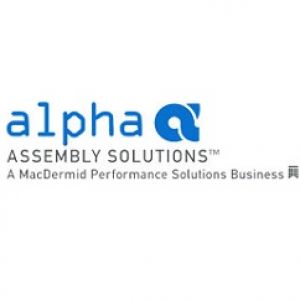WHAT ARE THE SOLDER FLUX TYPES AVAILABLE FOR SOLDERING IN ELECTRONICS?Posted by Alphaassembly on October 30th, 2017 Soldering is a complicated process – one that requires various intricate factors and processes to work together seamlessly in order to generate the desired output. Solder alloy is heated to create a conductive, reliable and strong joint between two metal surfaces. This joint actually is a metallurgical bond that needs to be resilient and electrically conductive. The chemical reaction responsible for the creation of this bond is dependent upon various factors, the most important of them being quality of the metal surfaces being joined. They should be free of dust, grime and oxidation – basically any contaminant that can hinder the chemical bonding process or compromise the strength and reliability of the solder joint. Ensuring that the metal surfaces remain clean for soldering is the responsibility of soldering flux paste. In this article, we will explore the different types of soldering flux available in the world of electronics manufacturing and find out their suitability for different applications. # Rosin Flux One of the oldest solder flux paste varieties is based off pine sap that is refined and purified to form rosin. This flux variety flows easily when heated but can achieve a solid and inert state when it is cooled down. It can, therefore, be easily used in PCBs where the circuit board will not go beyond a particular temperature where the rosin flux can become active again and harm the connection. Rosin flux residue can be easily removed with alcohol. This flux type can be further subdivided into three main categories:
# Organic acid flux This is the most commonly used solder flux paste varieties in the industry. It is made up of organic water soluble acids like citric, lactic, and stearic acid combined with solvents like isopropyl alcohol and water and is widely considered to be much stronger than its rosin based counterparts. It is also known to clean oxides off much more quickly and has a good wetting action. However, cleaning this flux off the board is important because it is electrically conductive and can damage the circuits if the PCB is put into operation. The flux residue however, can be easily cleaned off with water. # Inorganic acid flux This option is stronger than organic acid flux and uses stronger acids like hydrochloric acid, zinc chloride, and ammonium chloride. Its use is more targeted towards metals like copper, stainless steel and brass, but it needs to be carefully cleaned off quickly before the surfaces can be used because the flux residue can end up being severely corrosive. Therefore, a hot water or solvent rinse is recommended to protect your board. Choose the most suitable variety for your soldering application and ensure a reliable bind is formed every time you join surfaces in a circuit. About The Company Alpha Assembly Solutions Inc. is the global leader in the development, manufacturing and sales of innovative specialty materials used in a wide range of industry segments, including electronics assembly, power electronics, die attach, LED lighting, photovoltaics, semiconductor packaging, automotive and others. Since its founding in 1872, Alpha has been committed to developing and manufacturing the highest quality specialty materials. Like it? Share it!More by this author |


